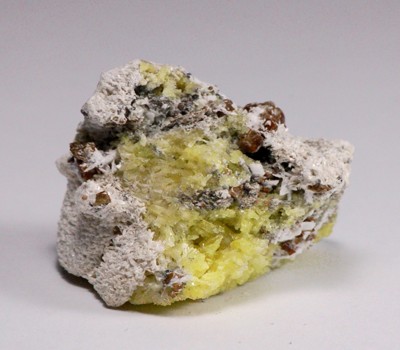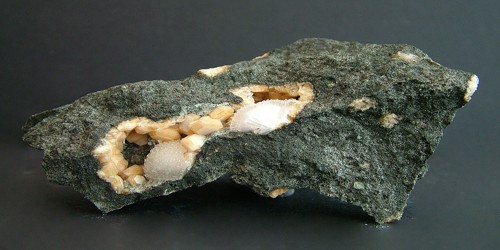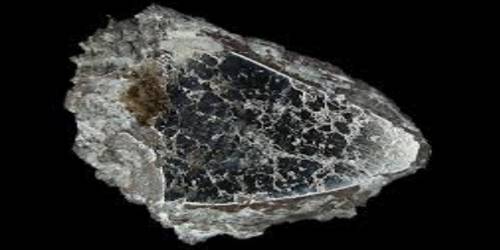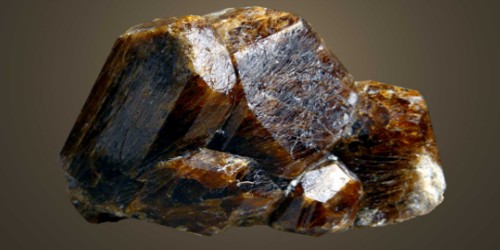Gonnardite is a comparatively rare, fibrous zeolite, natrolite subgroup. It is a mineral approximately Na2(Si3Al2)O10·2H2O consisting of a zeolite and occurring in radiating spherules. It was named in 1896 after Ferdinand Pierre Joseph Gonnard (1833–1923), who was Professor of Mining Engineering at the University of Lyon, France.
Older papers claim that a complete solid solution exists between tetranatrolite and gonnardite, but tetranatrolite was discredited as a separate species in 1999. A series, based on the disorder of the silicon-aluminum in the framework, appears to exist between Na-rich gonnardite and natrolite,
General Information
- Category: Tectosilicate
- Formula: (Na,Ca)2(Si,Al)5O10·3H2O
- Crystal system: Tetragonal
- Crystal class: Scalenohedral (42m)

Fig: Gonnardite
Properties
Gonnardite has the same framework structure as natrolite, but a disordered Si, Al distribution on the tetrahedral sites. Some of the water sites in the disordered natrolite structure of gonnardite are empty.
- Color: Colorless, white, yellow or pink to salmon orange
- Crystal habit: Radiating fibrous; massive
- Mohs scale hardness: 4 to 5
- Luster: Vitreous to silky or dull
- Streak: White
- Diaphaneity: Translucent
- Specific gravity: 2.21 to 2.36
- Optical properties: Biaxial (+)
Occurrences
Gonnardite has been found in silica-poor volcanic and pegmatites. It occurs with thomsonite and natrolite in vesicles in the volcanic rock of The Nut, near Stanley, Tasmania, Australia, intergrown with natrolite at Don Hill, Tasmania and in drill holes with chabazite and calcite near Guildford, Tasmania. It is also found in nepheline-syenite in the Grenville Geological Province, which is part of the Canadian Shield.
The earliest growth of many natrolite clusters appears to be gonnardite, and as growth slows the crystal becomes ordered. Gonnardite clusters occur in two principal environments, in cavities of altered basaltic lavas and as hydrothermal alteration of crystallization products in syenite.
Information Source:
















